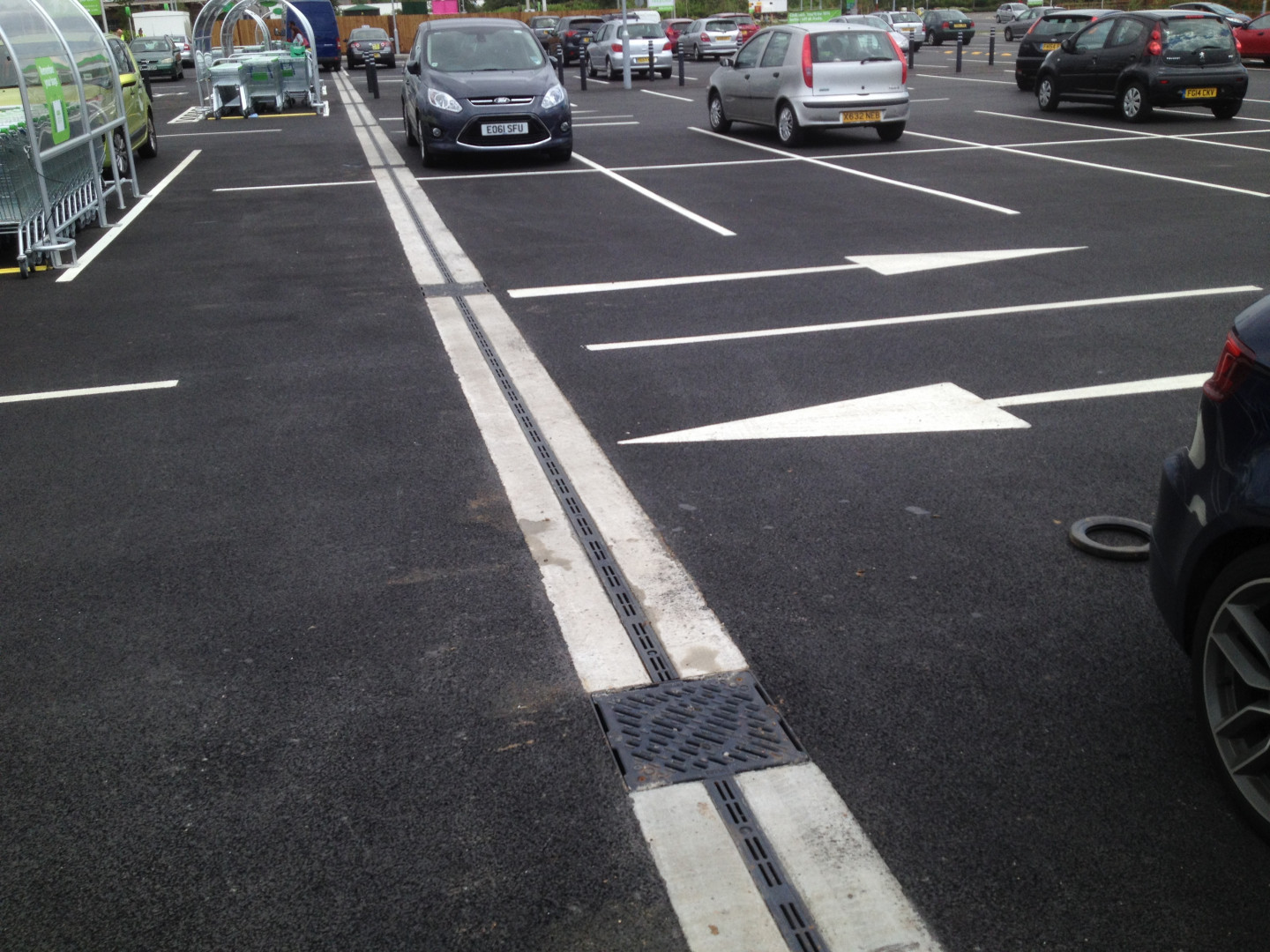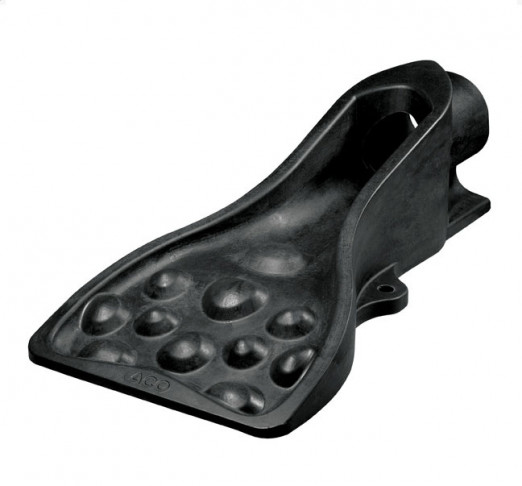Leicester City Council has worked collaboratively with Asda, ISG and ACO Water Management to achieve a first in sustainable urban drainage within a supermarket development. The solution is an integrated drainage solution that combines proprietary and vegetative systems to achieve effective surface water management, whilst introducing a level of biodiversity never attained before on a retail development.
Working to strict planning guidelines that required two swale inlets to be incorporated onto the site, Asda’s site feasibility team and ACO worked closely with ISG and the council’s landscape architect, Chryse Tinsley to move away from a more common permeable paving solution to achieve a cost effective, near to surface solution that required minimal ground works.
Calling on ACO’s extensive product range, an engineered system integrating vegetative elements and proprietary products was developed, which is consistent with the emerging SuDS standards. Stormwater is successfully managed on or near the surface, in an area that would have typically been highly impermeable.
Martin Fairley, research director at ACO, worked closely with Asda to design the scheme. “The scheme design exploits fully the drainage gradient on site and by combining, in sequence, shallow outlet inverts with granular sub-bases, filter strips, separators, detention basins and swales, a treatment train has been devised with many potential benefits. Water quality will improve through filtration, biodegradation, separation and exposure to sunlight.”
A number of ACO solutions were employed to collect, clean and release surface water run-off from the scheme‘s carpark.
ACO Qmax, a high capacity slot drainage system was installed over an approximate 90m length, serving a catchment of over 4000m2. Specified with shallow drainage inverts of 225mm Ø, the system enables a treatment train to be employed, where surface run-off cascades though a number of treatment components en-route to eventual outfall.
The first treatment stage comprises a shallow sub-surface granular stone media, to facilitate filtration and biodegradation as well as usefully slowing the flow of run-off.
With this feature allowing ‘on surface’ car parking, it’s crucial that the aggregate is protected from sediments that might otherwise bind the media. Two components are therefore employed for evaluation: a filter device installed in the Qmax outlet chambers, designed to filter particulates over 0.5mm; and polystyrene filled sacks that sit in the gully, providing adsorbent properties to which particulates bind.
The site’s petrol filling station is drained via a conventional oil separator and to further treat the potentially high pollution load, a high performance surface water treatment plant was installed. The ACO CPPMS system effectively removes the majority of sediments including smaller fractions of less than 100µm, and also treats dissolved metals such as copper and zinc. The CPPMS uses proprietary filters to remove and contain pollutants providing a point source for maintenance.
An ACO SuDS Swale Inlet unit links the proprietary conveyance drainage systems to the swale, and serves to dissipate some of the flow energy. The aesthetically pleasing solution is manufactured from Vienite, ACO's high strength sustainable material that offers greater durability. The inlet detail also cut installation time.
Chryse Tinsley, landscape architect for Leicester City Council said, “Once developed, the planting regime will provide further opportunities for wildlife and biodiversity. Planting is expected to flourish over the next 12 months and for those using the store – the natural features created will provide ambiance and natural habitat. For nearby domestic premises the trees, plants and water also provide a natural dividing line – quelling noise, whilst also providing a natural visual buffer.”

